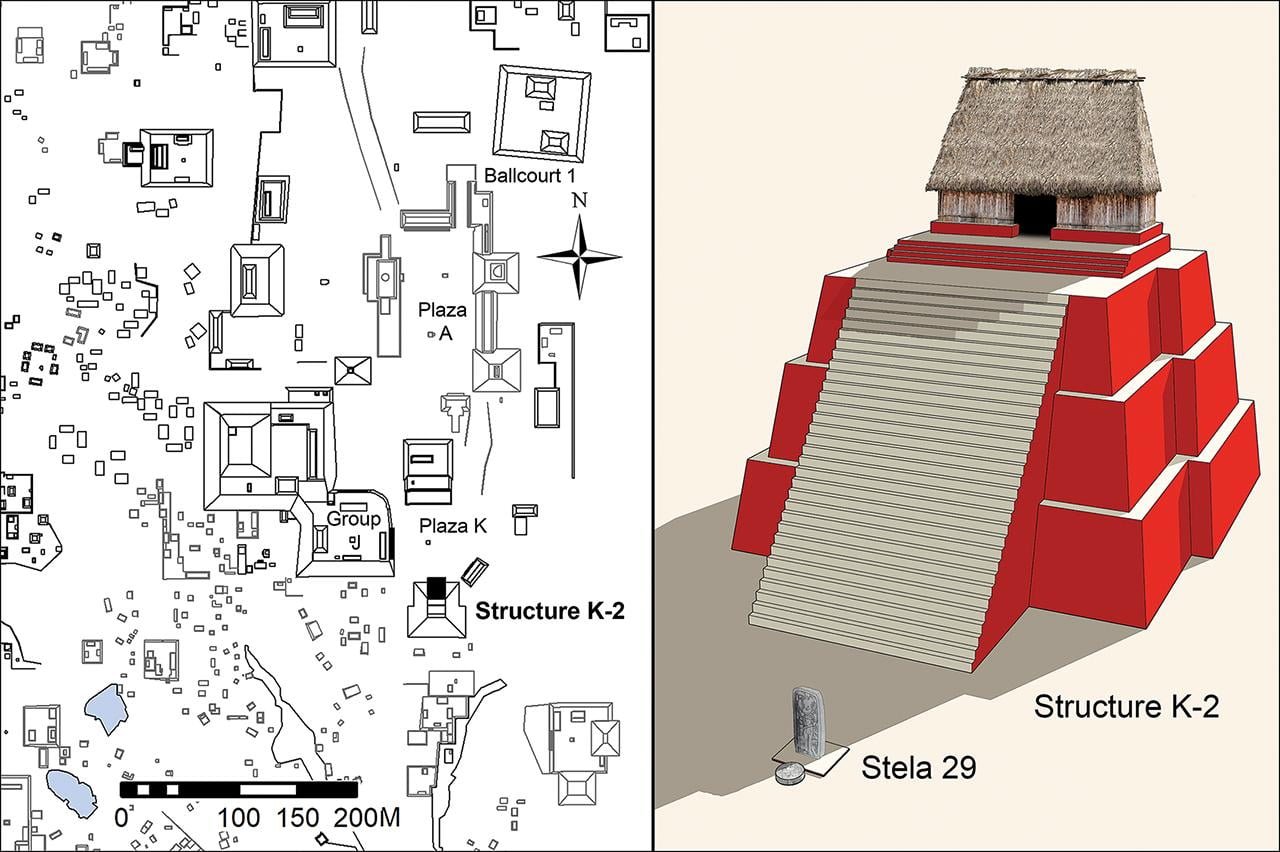Archaeologists excavating the Maya pyramid at K’anwitznal, known today as Ucanal, in present-day northern Guatemala, have unearthed human remains among thousands of jade and marine ornaments.
 Carved pendant plaque of a human head, Burial 20-1. The original suspension hole ran through the long section of the plaque and a second suspension hole was added later, along with the carved head imagery, running through the short section of the plaque. Credit: C. Halperin, Antiquity 2024
Carved pendant plaque of a human head, Burial 20-1. The original suspension hole ran through the long section of the plaque and a second suspension hole was added later, along with the carved head imagery, running through the short section of the plaque. Credit: C. Halperin, Antiquity 2024
The findings, detailed in a paper published in the journal Antiquity, reveal the aftermath of a ritualistic burning.
The excavation, led by Dr. Christina T. Halperin from the University of Montreal, uncovered a deposit within one of the pyramid’s phases containing burnt human bones alongside thousands of jade and marine shell ornaments. The charred remnants, dating back to the 9th century CE, indicate a ceremonial act of political defiance or renewal, likely following the ascension of a new ruler.
 Left) plan of part of the Ucanal site core showing the location of Structure K-2; right) illustrated reconstruction of Structure K-2 in its final phase (reconstruction by L.F. Luin). Credit: Halperin et al., Antiquity 2024
Left) plan of part of the Ucanal site core showing the location of Structure K-2; right) illustrated reconstruction of Structure K-2 in its final phase (reconstruction by L.F. Luin). Credit: Halperin et al., Antiquity 2024
Radiocarbon analysis suggests that the burning event occurred between CE 773 and 881, well after the deaths of the individuals whose remains were subjected to the ritualistic fire. This deliberate act of desecration, characterized by the intense heat that fractured and exploded many of the artifacts, served as a symbolic closure to the reign of the previous dynasty and the establishment of a new political order under the leadership of Papmalil, a potentially foreign ruler.
 Burnt and cracked greenstone ornaments from the Burial 20-1 deposit. Credit: Halperin et al., Antiquity 2024
Burnt and cracked greenstone ornaments from the Burial 20-1 deposit. Credit: Halperin et al., Antiquity 2024
The artifacts discovered, including a greenstone mask, jade ornaments, obsidian pieces, and ceramic objects, point to the high status of the individuals whose remains were burned, likely members of the Maya royalty. The presence of a rust-reddish pigment on the artifacts suggests they were part of burial rites.
Dr. Halperin notes that this ritual event reflects broader societal shifts during a period of political turmoil in the Maya Lowlands. The reign of Papmalil ushered in new forms of monumental imagery and social structures, emphasizing horizontal political ties over hierarchical systems, reshaping the fabric of Maya society.
This discovery challenges previous narratives of Maya decline and collapse, highlighting instead the active role Maya communities played in reshaping their political landscapes during periods of transition.
The burning ritual at K’anwitznal represents not just an end to an era but a strategic reconfiguration of Maya society, marking a pivotal moment in their history.
More information: Halperin CT, Perea Carrera ML, Miller Wolf KA, LeMoine J-B. (2024). A pivot point in Maya history: fire-burning event at K’anwitznal (Ucanal) and the making of a new era of political rule. Antiquity:1-19. doi:10.15184/aqy.2024.38





